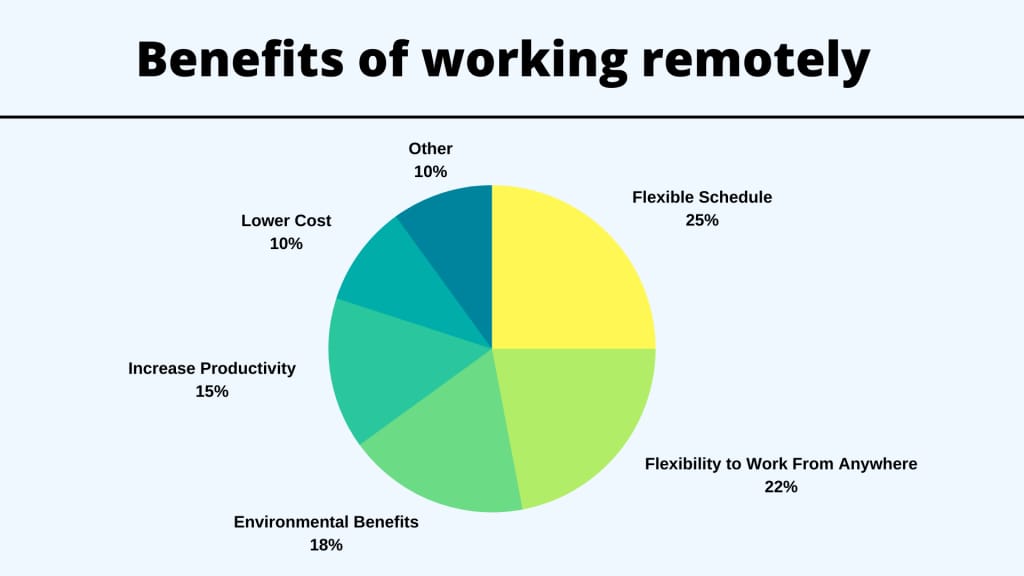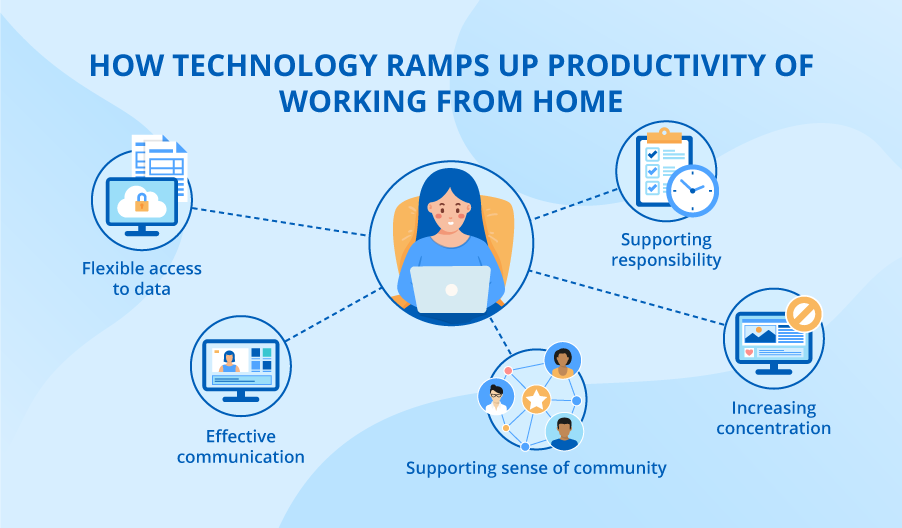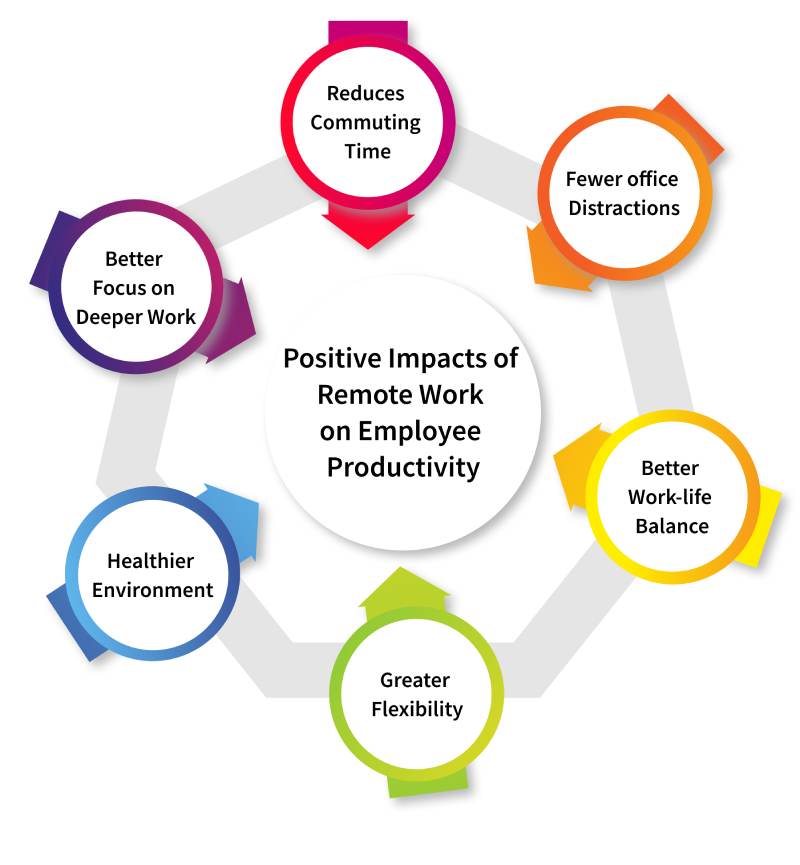1. Setting Up a Productive Remote Work Environment
Working remotely comes with its own set of challenges, particularly when it comes to staying focused and productive. One of the key elements in ensuring remote work productivity is setting up a conducive work environment. This includes having a designated workspace that is free from distractions, comfortable, and well-equipped with all the necessary tools and resources.
Make sure your workspace is well-lit, organized, and ergonomic to prevent any physical discomfort that could hinder your productivity. Additionally, it’s important to establish boundaries with family members or roommates to minimize interruptions during work hours. By creating a dedicated and functional work environment, you’ll be able to better focus on your tasks and achieve optimal productivity while working remotely.
2. Establishing a Routine and Schedule

One of the benefits of remote work is the flexibility it offers in terms of working hours. However, this can also be a double-edged sword if not managed properly. To maximize productivity while working remotely, it’s essential to establish a routine and schedule that works for you. This includes setting specific work hours, breaks, and deadlines to help you stay on track and focused throughout the day.
Start your day by creating a to-do list or schedule that outlines your tasks and priorities. This will help you stay organized and accountable for your work. Make sure to also schedule regular breaks to rest and recharge, as well as time for meals and physical activity. By creating a structured routine, you’ll be able to maintain a healthy work-life balance and optimize your productivity while working remotely.
3. Utilizing Technology for Remote Collaboration

In today’s digital age, technology plays a crucial role in facilitating remote work productivity. Whether you’re working independently or as part of a team, utilizing the right tools and platforms can streamline communication, collaboration, and project management. From video conferencing and messaging apps to project management software and cloud storage, there are numerous tools available to help you stay connected and productive while working remotely.
Make sure to familiarize yourself with the technology and tools that your team uses for remote collaboration. This includes setting up regular check-ins, virtual meetings, and shared documents to keep everyone aligned and informed. By leveraging technology effectively, you’ll be able to overcome the challenges of remote work and enhance your productivity in a virtual work environment.
4. Setting Clear Goals and Objectives

One of the keys to remote work productivity is having clear goals and objectives that guide your work and priorities. By setting specific, measurable, achievable, relevant, and time-bound (SMART) goals, you’ll be able to stay focused, motivated, and accountable for your tasks. Communicate your goals with your team or supervisor to ensure alignment and support in achieving them.
Break down your goals into smaller tasks and milestones to make them more manageable and actionable. Regularly track and evaluate your progress to make adjustments as needed and stay on track towards your objectives. By setting clear goals and objectives, you’ll be able to maintain a sense of purpose and direction in your remote work and increase your productivity.
5. Managing Distractions and Time Management

One of the biggest challenges of remote work is managing distractions and staying focused throughout the day. From household chores and family responsibilities to social media and email notifications, there are numerous distractions that can derail your productivity while working remotely. To combat this, it’s important to establish boundaries, prioritize tasks, and practice effective time management techniques.
Consider using time-blocking methods, such as the Pomodoro Technique, to allocate specific time intervals for work and breaks. This can help you maintain focus and productivity while also preventing burnout. Additionally, use tools like website blockers and productivity apps to minimize distractions and stay on task. By managing distractions and practicing good time management, you’ll be able to optimize your productivity and performance in a remote work setting.
6. Practicing Self-Care and Wellness

Remote work can blur the lines between work and personal life, making it important to prioritize self-care and wellness to maintain productivity and overall well-being. Make time for physical exercise, healthy meals, adequate sleep, and relaxation to recharge and rejuvenate your mind and body. Incorporate mindfulness practices, such as meditation or yoga, to reduce stress and increase focus.
Set boundaries between work and personal time to prevent burnout and maintain a healthy work-life balance. Practice self-awareness and self-care techniques to stay motivated and resilient in the face of challenges. By prioritizing your well-being and practicing self-care, you’ll be able to sustain productivity and performance in a remote work environment.
7. Seeking Support and Collaboration
Remote work can sometimes feel isolating, particularly if you’re used to working in a traditional office setting. To combat feelings of loneliness and maintain motivation, it’s important to seek support and collaboration with colleagues, friends, or mentors. Stay connected with your team through virtual meetings, group chats, or virtual coffee breaks to foster a sense of camaraderie and teamwork.
Don’t hesitate to reach out for help or feedback when needed, as collaboration and communication are essential for remote work productivity. Join online communities, networking groups, or professional organizations to connect with like-minded individuals and share experiences. By seeking support and collaboration, you’ll be able to enhance your productivity and performance while working remotely.
8. Reflecting and Evaluating Your Remote Work Productivity
Regularly reflecting on your remote work productivity is essential for continuous improvement and growth. Take time to evaluate your performance, goals, and challenges to identify areas for improvement and development. Acknowledge your achievements and successes, as well as any setbacks or obstacles that you encountered along the way.
Solicit feedback from your team or supervisor to gain insights and perspectives on your work and productivity. Use this feedback to make adjustments, set new goals, and refine your remote work strategies. By reflecting and evaluating your remote work productivity, you’ll be able to make informed decisions and enhancements to optimize your performance and success in a virtual work environment.
Conclusion
In conclusion, remote work productivity requires a combination of effective strategies, tools, and mindset to succeed in a virtual work environment. By setting up a productive work environment, establishing a routine and schedule, utilizing technology for remote collaboration, setting clear goals and objectives, managing distractions and time management, practicing self-care and wellness, seeking support and collaboration, and reflecting and evaluating your productivity, you’ll be able to maximize your performance and success while working remotely. Embrace the flexibility and opportunities that remote work offers, and leverage the tips and techniques outlined in this article to enhance your productivity and thrive in a virtual work setting.